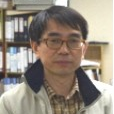Marine Drug Research in Korea II
A special issue of Marine Drugs (ISSN 1660-3397).
Deadline for manuscript submissions: 30 June 2024 | Viewed by 9087
Special Issue Editor
Special Issue Information
Dear Colleagues,
Korea is a peninsula surrounded by three seas and possessing numerous islands. This includes Jeju Island, which is known for its rich marine diversity. Koreans have long utilized marine organisms as a food source. Since the 1990s, research into high-value materials from marine origin has been initiated by the Korean Ocean Research Institute. Since then, many studies on marine-derived bioactive compounds and various biological activities have been actively conducted at universities. Recently, the government has recognized the potential for marine biotechnology related to marine medicines and established new national research institutes to systematically manage and develop marine organisms inhabiting Korean coastal areas.
Following the first Special Issue on this field, entitled “Marine Drug Research in Korea” (2021), this Issue also aims to feature compounds isolated from various marine organisms and outline their biological activity. We therefore welcome papers on the isolation, structure elucidation, synthesis, and biological activity and action mechanism evaluation of compounds of marine macro-/microorganisms.
Prof. Dr. Jung-Rae Rho
Guest Editor
Manuscript Submission Information
Manuscripts should be submitted online at www.mdpi.com by registering and logging in to this website. Once you are registered, click here to go to the submission form. Manuscripts can be submitted until the deadline. All submissions that pass pre-check are peer-reviewed. Accepted papers will be published continuously in the journal (as soon as accepted) and will be listed together on the special issue website. Research articles, review articles as well as short communications are invited. For planned papers, a title and short abstract (about 100 words) can be sent to the Editorial Office for announcement on this website.
Submitted manuscripts should not have been published previously, nor be under consideration for publication elsewhere (except conference proceedings papers). All manuscripts are thoroughly refereed through a single-blind peer-review process. A guide for authors and other relevant information for submission of manuscripts is available on the Instructions for Authors page. Marine Drugs is an international peer-reviewed open access monthly journal published by MDPI.
Please visit the Instructions for Authors page before submitting a manuscript. The Article Processing Charge (APC) for publication in this open access journal is 2900 CHF (Swiss Francs). Submitted papers should be well formatted and use good English. Authors may use MDPI's English editing service prior to publication or during author revisions.
Keywords
- marine natural products
- structure determination
- biological activity
- marine organisms
- organic synthesis
Related Special Issue
- Marine Drug Research in Korea in Marine Drugs (8 articles)






